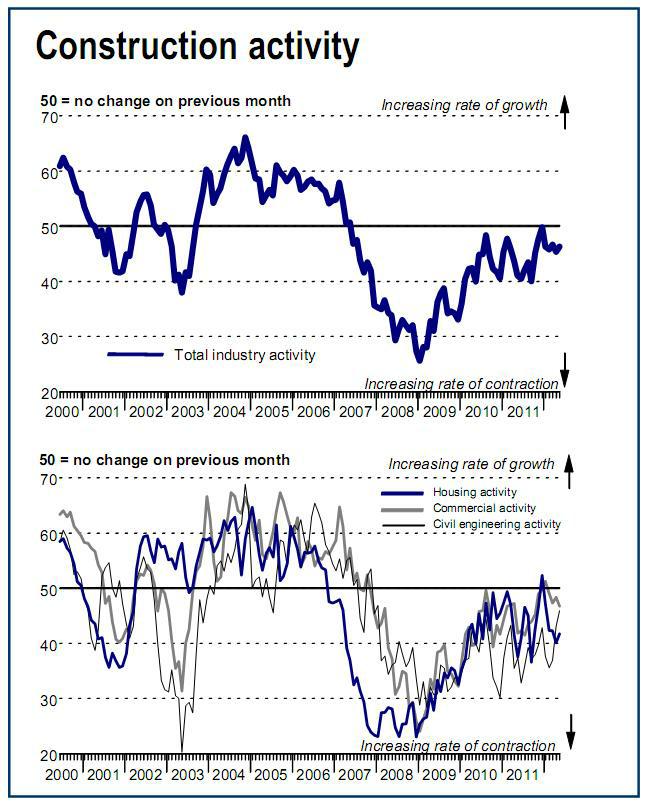This is an article from today's Irish times, just shows why there will be no building here for a while..................
Woman buys back brother's repossessed house at auction
 Orla Mulvey and husband Martin after yesterday's Merlin auction.
Orla Mulvey and husband Martin after yesterday's Merlin auction.
THERE WAS a little bit of magic at the second Merlin property auction in Dublin yesterday when a woman successfully bought back a house that had recently been repossessed from her brother CONOR POPE, Consumer Affairs Correspondent
Orla Mulvey paid just €76,000 for the five-bedroom detached house in Castlepollard, Co Westmeath. It had been built on her father’s land and was being sold by the financial institution which had secured the repossession order.Ahead of the auction she told the 75 people in the Radisson Blu hotel ballroom that she was trying to buy back the house for her family. It had an advised minimum value (AMV) of €70,000. When bidding started at €50,000 there were three interested parties but at €76,000 Ms Mulvey was the last one standing.She punched the air after posting the winning bid and said later that her whole family, and her father in particular, were delighted she had won. She was reluctant to go into details of her family’s financial arrangements or the mortgage originally taken out on the home. Similar properties in the area were selling for more than €250,000 at the height of the property bubble.It was a bright moment in an otherwise dull day and the choice of the Hall and Oates 1980s pop tune I Can’t Go for That as the music to launch the auction proved appropriate, with 15 of the 20 properties withdrawn after failing to attract much attention.Lot number one was a fully furnished one-bedroom apartment in Ballyconnell, Co Cavan, which had an AMV of €20,000. Described as a “good little getaway” by auctioneer David Kehoe, it attracted an opening bid of just €10,000, inching up to €13,500 before it was withdrawn.A three-bedroom bungalow in Belturbet, Co Cavan, with a large garden with “superb views” of the Shannon-Erne waterway, had an AMV of €58,000 but the highest bid was €28,000 shy of that amount and it too was taken off the table.A pub and house in Athy, Co Kildare, valued at €1 million in 2007, was also withdrawn after bidding stopped at €150,000, some €40,000 off the AMV set by Merlin.Monkstown Snooker Hall was, Merlin said, valued at €1.25 million four years ago but was available for €250,000 yesterday. Mr Kehoe reminded potential buyers that the venue had an amusement licence and said “if you fancy putting in slot machines it could be ideal”.No one was willing to take the gamble, however, and the property was withdrawn at €200,000.
Woman buys back brother's repossessed house at auction
 Orla Mulvey and husband Martin after yesterday's Merlin auction.
Orla Mulvey and husband Martin after yesterday's Merlin auction.THERE WAS a little bit of magic at the second Merlin property auction in Dublin yesterday when a woman successfully bought back a house that had recently been repossessed from her brother CONOR POPE, Consumer Affairs Correspondent
Orla Mulvey paid just €76,000 for the five-bedroom detached house in Castlepollard, Co Westmeath. It had been built on her father’s land and was being sold by the financial institution which had secured the repossession order.Ahead of the auction she told the 75 people in the Radisson Blu hotel ballroom that she was trying to buy back the house for her family. It had an advised minimum value (AMV) of €70,000. When bidding started at €50,000 there were three interested parties but at €76,000 Ms Mulvey was the last one standing.She punched the air after posting the winning bid and said later that her whole family, and her father in particular, were delighted she had won. She was reluctant to go into details of her family’s financial arrangements or the mortgage originally taken out on the home. Similar properties in the area were selling for more than €250,000 at the height of the property bubble.It was a bright moment in an otherwise dull day and the choice of the Hall and Oates 1980s pop tune I Can’t Go for That as the music to launch the auction proved appropriate, with 15 of the 20 properties withdrawn after failing to attract much attention.Lot number one was a fully furnished one-bedroom apartment in Ballyconnell, Co Cavan, which had an AMV of €20,000. Described as a “good little getaway” by auctioneer David Kehoe, it attracted an opening bid of just €10,000, inching up to €13,500 before it was withdrawn.A three-bedroom bungalow in Belturbet, Co Cavan, with a large garden with “superb views” of the Shannon-Erne waterway, had an AMV of €58,000 but the highest bid was €28,000 shy of that amount and it too was taken off the table.A pub and house in Athy, Co Kildare, valued at €1 million in 2007, was also withdrawn after bidding stopped at €150,000, some €40,000 off the AMV set by Merlin.Monkstown Snooker Hall was, Merlin said, valued at €1.25 million four years ago but was available for €250,000 yesterday. Mr Kehoe reminded potential buyers that the venue had an amusement licence and said “if you fancy putting in slot machines it could be ideal”.No one was willing to take the gamble, however, and the property was withdrawn at €200,000.



.gif) ....Or three .....
....Or three .....


 That doesn't paint a very rosy picture .
That doesn't paint a very rosy picture .

Comment